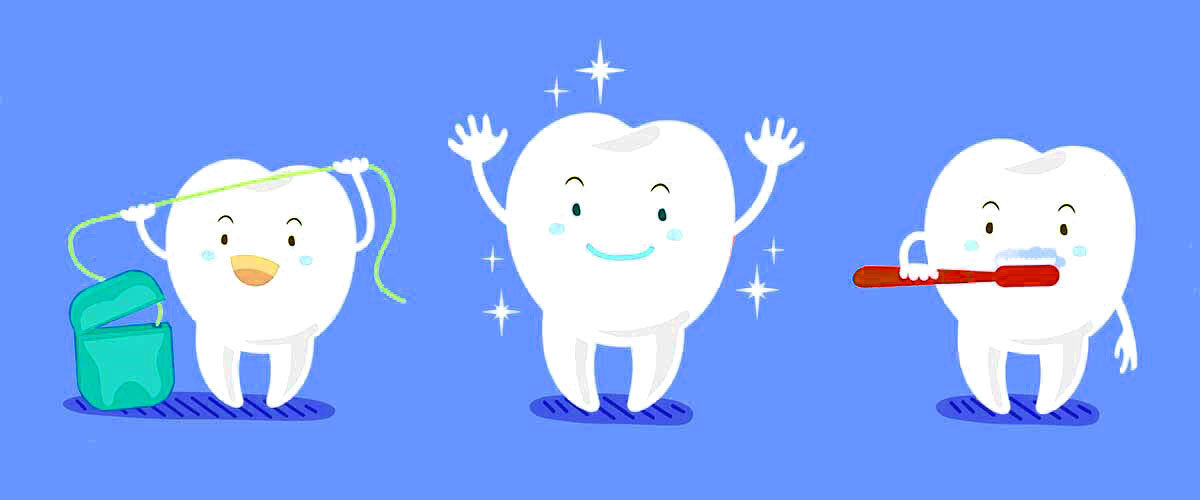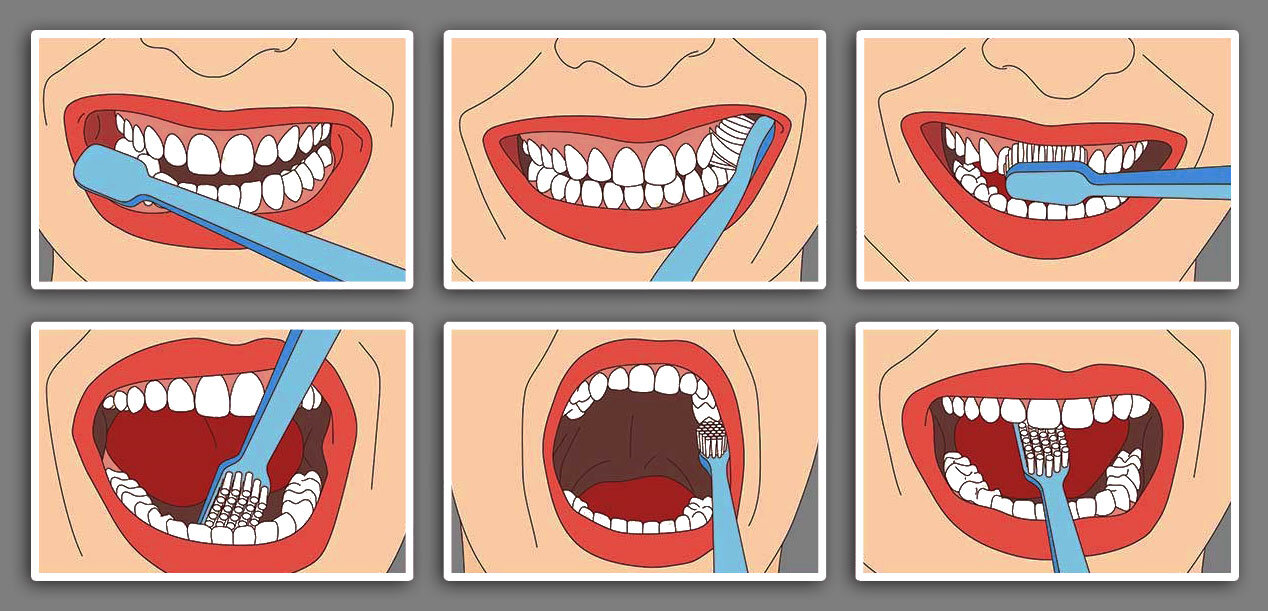Celebrate ‘Wrong Way Day’ with a Lesson
Proper Dental Hygiene: A Guide to Brushing and Flossing Your Teeth the RIGHT Way
You may already know that there are right and wrong ways to brush and floss your teeth. Nevertheless, knowing this and doing it regularly are two vastly different things. In honor of ‘Wrong Way Day,’ the silly holiday of July 17th, we wanted to take some time to discuss both the wrong and right ways of practicing good dental hygiene.
To Brush, or Not To Brush
Most people are aware that they need to brush their teeth every day—it’s something we are told since childhood. However, did you know that you should actually be brushing your teeth twice daily?
That’s right! Brushing once in the morning isn’t enough as it only offers your teeth the shield they need to protect your enamel throughout the day. It’s important to brush again at night to both clean up from the day’s eating activities as well as provide that protective coating to help keep your teeth safe and healthy while you sleep.
Brushing twice daily not only helps to clean your teeth and gums from everyday wear and tear, but it also helps to prevent further issues such as halitosis (bad breath), tooth decay, gum disease, and more!
So, How Should I Brush My Teeth?
When brushing, there are a few important things to keep in mind; one of them being the length of time needed to thoroughly clean your teeth. The average person brushes their teeth anywhere from 30-45 seconds which is not ample enough time to completely clean your teeth. It is suggested that you spend at least two minutes brushing—that’s 30 seconds for each quadrant of your mouth.
Another significant thing to keep in mind while brushing is not to brush too hard. A popular misconception people make when brushing is that, in order to rid their teeth of plaque and build-up, one needs to brush hard or scrape the surface of their tooth. Doing this can lead to stripping the enamel of your teeth; something that you cannot get back!
There are five easy steps one can follow in order to brush one’s teeth both effectively and with care:
Hold your toothbrush at a 45-degree angle towards the gum line.
Use only a small amount of toothpaste—the size of a pea is ideal.
Brush gently in a circular motion. You may want to brush back and forth, however, this can cause you to skip your gumline and aid in missing large sections of your teeth. Make sure the bristles of your brush are covering the entire surface area of your tooth!
Repeat this process on the inside surfaces of your mouth. Don’t forget the backsides of your teeth!
The only time you should brush back and forth is for the tops of your teeth; these are your chewing surfaces and they too need some TLC.
By following these five easy steps and doing so twice daily, you’ll be well on your way to good dental hygiene!
Brushing Your Teeth is NOT the Only Key
Brushing your teeth isn’t the only thing needed to keep up a proper dental healthcare regimen. The most common mistake people make when trying to practice oral hygiene is believing that brushing your teeth is the be all, end all of dental hygiene.
Brushing your teeth is an crucial part of the process, but it certainly isn’t the only thing that needs to be done. In fact, by brushing alone, you can miss more than half of the germs residing inside your mouth. And with more germs in your mouth than there are people on Earth, there’s plenty that needs to be done to sustain oral health.
While there are various procedures we offer to help your mouth reach an optimum level of health, maintaining good cleaning habits is the most beneficial thing you can do for yourself. In addition to brushing your teeth, there’s another simple activity we can practice that we know all too well—flossing.
Flossing: Nobody’s Favorite Hobby
It’s no surprise that many of us don’t enjoy the habit of flossing our teeth. With this in mind, we also need to acknowledge that flossing is absolutely essential to the overall health of our mouths.
Flossing at least once daily helps to lift and remove plaque/food that can get trapped between your teeth and in your gum line. Since ordinary toothbrushes are for cleaning the surface of our teeth, flossing works to clean those hard to reach areas that toothbrush bristles just can’t reach. Practicing proper flossing technique removes plaque and food debris which is necessary in preventing harmful bacteria from irritating your gums. Angry gums can cause pain both at home and here in the dentist’s chair.
How Do I Know If I’m Flossing Incorrectly?
Do your gums bleed when you floss? Are they tender upon brushing or eating? Do they appear to be red or swollen? Is persistent bad breath something that never seems to go away?
These may all be signs that you’re not flossing properly and/or enough. The good news is that while these symptoms are not ideal and can be painful or downright scary, beginning to regularly floss isn’t a lost cause!
There are five easy steps to flossing correctly:
As aforementioned, flossing once daily is the key. Be sure to use a decent amount of floss as well. If you were to measure it out, the length of it should be roughly 18 inches long.
Wrap each end of the floss around your fingers and leave roughly an inch of space in between to do the dirty work.
Practice a gentle ‘sawing’ motion while making your way between both the upper and lower teeth
There will be resistance as your floss reaches the gum line, this is normal. Curve your floss into a ‘C’ shape against your tooth. Gently scrape the tooth’s side as you move the floss away from your gum. Do this for all of your teeth—even those pesky ones in the back!
Make sure you floss underneath the gum line to remove any hidden tooth decay. If you haven’t flossed recently, your gums may be sore or will bleed. It should only take about 5-6 days of consistent flossing for built-up bacteria that causes gum discomfort to be removed altogether. After that, your gums should feel fantastic!
Some common flossing mistakes include:
Flossing too often. This can damage your gum tissue and prolong sensitivity.
Missing both sides of the tooth. When flossing, be sure to concentrate on the gaps between your teeth. Singular spaces need to be cleaned which means you need to focus on flossing each side of your tooth below the gumline.
Only flossing when you feel something in your teeth. While flossing is a great tool to freeing that annoying piece of steak from dinner or picking out that kernel of popcorn from your trip to the movie theater, the activity of flossing needs to be done daily for best results.
Stopping at the first sign of bleeding. Blood is not something you want to see when flossing, but this doesn’t mean you should stop! With time, your gums will become less swollen and cease bleeding, but only if you are persistent and continue to floss consistently.
It’s Never Too Late
The most important thing to remember is that it is never too late to start the process towards good oral hygiene. It’s natural to feel anxious when thinking about increasing our brushing and/or flossing habits; especially when we may not have been doing them for a while. The first step on your path to dental health is recognizing the need for change. Once you do that, you’re already halfway there!
Another significant piece of the oral-health-puzzle is regularly seeing your dentist and having a professional cleaning. By making an appointment, you’re taking that essential next step on your journey to properly caring for your teeth.
We’re Here for You!
No matter where you’re at in your journey, you’ll always be in safe hands at Alexandria Smiles. Whether you have fears of dentistry or are embarrassed, don’t be! You can take comfort in knowing that we will never judge where you stand on your path of dental health.
You can always contact us with any questions or concerns you may have about an upcoming appointment or procedure. We’re always happy to help alleviate any and all fears you may have.
Today, celebrate ‘Wrong Way Day’ by turning things around and taking care of your mouth the right way. Both your teeth and gums will thank you!
The Answer to “What Happens If I Forget to Brush My Teeth?”
So, you forgot to brush your teeth again, why does it matter? Keep reading to find out!
Making Good Brushing Habits Fun for Everyone!
Brushing your teeth doesn’t have to be a chore. Here’s 5 mobile apps that will bring the fun to to your dental hygiene routine!
Bad Breath? No Problem! Fix It Using These Fast Facts
Put a stop to bothersome halitosis with tips from this short guide.



